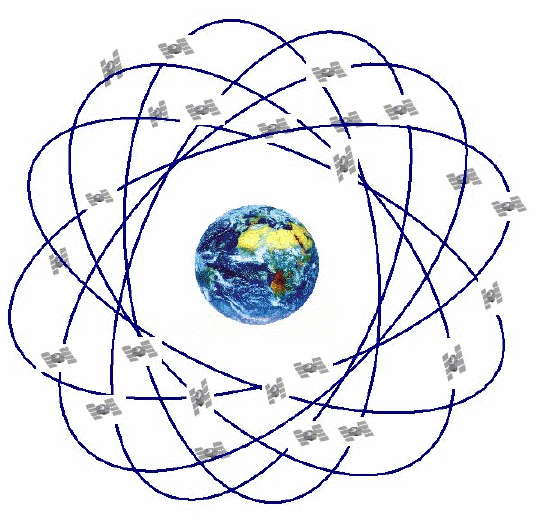The global positioning system used in navigation systems and mobile phones was originally an American military system. It consists of about thirty satellites in six high Earth orbits. At any point above the Earths surface several of these satellites will be above the horizon so their signals can be picked up by a receiver on the Earth's surface.

The satellites send out regular precisely timed signals identifying themselves, their position and the time of transmission using an atomic clock. The receiver on the ground compares the time of receipt of the signal with the time of emission and measures the time difference. The distance from the satellite can be calculated. By using signals from several satellites – at least three - the receiver can calculate its own position on the Earth's surface to within a few metres.
So accurate do the signals need to be timed that Einstein's General Theory of Relativity must be used to correct for the slower passage of time nearer to the Earth's surface. The frequency transmitted by the satellite is slightly less than the frequency received by the receiver and this must be taken into account.
